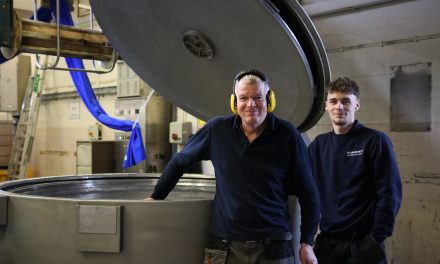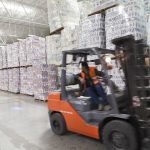![]() Due to the fact that many regulations continue to evolve past their initial introduction, it is vital that those responsible for compliance keep their finger on the pulse. The WEEE Directive is a case in point, as Ernest Magog of Lumicom explains
Due to the fact that many regulations continue to evolve past their initial introduction, it is vital that those responsible for compliance keep their finger on the pulse. The WEEE Directive is a case in point, as Ernest Magog of Lumicom explains
It is certainly not unusual for regulations to be modified after their introduction, and waste disposal is a prime example, particularly the Waste Electrical and Electronic Equipment (WEEE) Directive.
Since it was first introduced the WEEE Directive has undergone a number of iterations, most notably with the introduction of more categories of products to its scope, along with guidelines from the regulating bodies on how to deal with them.
For example, last year the Environment Agency (EA) brought a number of items into the scope of the WEEE regulations, accompanied by guidance on how to interpret different situations. These include components such as ballasts, photoelectric cells and igniters used in lighting products, and fire alarm systems. The EA also issued guidance on how to manage products that can be used for both household and non-household applications.
Electrical components are an interesting case, as they may be incorporated into finished items or they may be put on the market in their own right for use in repairs and maintenance. So when ballasts, photoelectric cells and igniters are supplied to a manufacturer for incorporation into a new outdoor lighting fixture, for example, the component manufacturer is not classified as a producer – it is the manufacturer of the finished item that bears this burden. However, when those same items are sold as ‘spare parts’ it is the manufacturer of the components that is classified as the producer.
In such cases, the light fitting falls within Category 5 of the WEEE regulations, while photoelectric cells, ballasts and igniters come under Category 9. The lighting column is not covered by the regulations and rolls of cable are only covered if they are complete with connectors.
![]() The complex issue of lighting
The complex issue of lighting
All of this has implications for managing waste on-site and the key to achieving this effectively is to be clear who is responsible for the disposal of which waste products – as well as being aware of how the waste should be separated on-site prior to collection. To that end, lighting products are often the most complex to deal with because they incorporate so many different components.
In the case of both indoor and outdoor luminaires, the luminaire body needs to be separated from lamps, control gear components and any emergency lighting batteries as these all need to be dealt with separately. Lamps themselves may need to be separated further, as low and high intensity discharge lamps (fluorescent, sodium, metal halide etc), are classified as hazardous waste, whereas incandescent lamps are not. Importantly, any discharge lamps stored on-site need to be dealt with in compliance with the Control of Substances Hazardous to Health (COSHH) regulations.
LED light sources are increasing in popularity, so it’s also worth noting that the classification of interchangeable LED light sources has been changed so that these now count as lamps. LED light sources are further differentiated to allow better assessment of WEEE costs and more accurate analysis by compliance schemes. Thus, LED lamps containing an internal driver, designed to fit and operate within an existing type of socket, are classified as retro-fit LED lamps. LED light sources that operate by way of a separate driver, requiring hard wiring to the lighting circuit, are classified as LED modules.
Making life easier
Compliance schemes have a duty to make compliance with these regulations as easy as possible. This is achieved not just by providing guidance but also through practical measures such as making key documents downloadable, so that the paperwork side runs smoothly. For instance, while projects disposing of large volumes of luminaires will qualify for a skip, smaller volumes will need to be transported to a local collection point. Being able to download and print the relevant delivery note saves a lot of time and hassle.
In parallel, compliance schemes cover the disposal costs for products supplied by manufacturers, so this needs to be factored in from the early design stages. Specifying lighting products from a number of different companies that belong to different compliance schemes is simply storing up administrative headaches for the future. Selecting manufacturers that belong to the same compliance scheme pro-actively prevents those headaches, so an important element of the specification process is to ensure that suppliers can provide a valid certificate confirming their membership of a compliance scheme.
Since the Directive was introduced thousands of lighting products have been diverted from landfill and with new products entering the market all the time it’s important that this process continues. So getting to grips with waste management isn’t just about compliance, it’s also about safeguarding the future.





